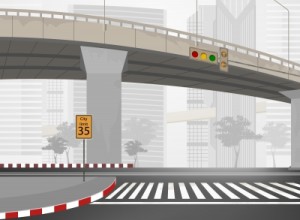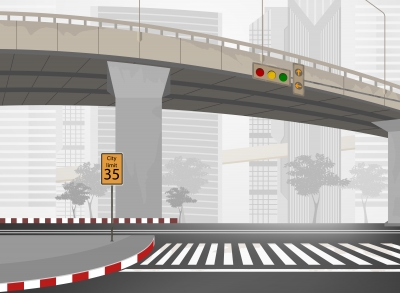 The Philippine Chamber of Commerce and Industry (PCCI) is asking the government to approve the proposed elevated expressway project that will connect the Port of Manila to the Skyway Stage 3 project, saying it will ease traffic, lower delivery costs, cut travel time, and prevent a repeat of the port congestion.
The Philippine Chamber of Commerce and Industry (PCCI) is asking the government to approve the proposed elevated expressway project that will connect the Port of Manila to the Skyway Stage 3 project, saying it will ease traffic, lower delivery costs, cut travel time, and prevent a repeat of the port congestion.
PCCI president Alfredo Yao, in a letter to the Toll Regulatory Board (TRB) on July 9, said the proposed elevated expressway will give 24/7 access to trucks and other vehicles traveling along the stretch of North Boulevard and Road -10 to the Skyway Stage 3 project.
The port connector road is also seen to ease traffic going to and from the Port of Manila and help spare consumers, exporters, and importers from the high cost of deliveries.
The P26-billion Skyway Stage 3, an ongoing public-private partnership (PPP) construction started by Citra Central Expressway Corporation (CCEC) on February 17, will connect the North and South Luzon expressways from Buendia in Makati to Balintawak in Caloocan City. The CCEC, the tandem of San Miguel Corporation and Citra Group of Indonesia, is also supporting the elevated expressway project.
“Our membership is concerned over the repeat of the port congestion last 2014 resulting in business losses amounting to P70 billion if no new road infrastructures are put in place in the medium term,” Yao said in a July 9 letter to Edmundo O. Reyes, Jr., TRB executive director.
Yao said that from the business sector’s point of view, “the so-called port congestion is only the result of the real problem of road congestion.”
The PCCI head said that they expect almost half of the delivery trucks from the Port of Manila to use the proposed elevated link to Stage 3 and benefit from the drastically reduced travel times to their destinations outside Metro Manila.
“Continuity of business is key to PCCI,” Yao wrote. “By accelerating the movement of raw materials and finished goods to and from the ports, we are certain that this proposed project would increase productivity and propel the growth of our economy.”
Easing ground gridlock
Traffic volumes on the ground streets of Metro Manila, meanwhile, will also be cut by almost half even during non-truck ban hours, he said.
Yao said the worsening traffic in Metro Manila costs the economy about P140 billion annually as estimated by the Japan International Cooperation Agency in 2013.
Manila North Harbour Port, Inc. (MNHPI), operator of the country’s premier domestic port North Port, earlier said it had discussions with CCEC regarding construction of a port connector road.
MNHPI chief executive officer Richard Barclay, in a presentation during the Manila Ports Briefing last May, said they are proposing to the government a two-by-two lane elevated port connector road leading to the Sgt. Rivera interchange of the Skyway Stage 3 and traversing 5th Avenue, Circumferential Road 3 (C-3), and Road 10 (R-10).
The proposal was also presented to the Philippine Ports Authority and its mother agency, the Department of Transportation and Communications (DOTC), which in turn submitted it to other concerned government agencies such as the TRB, according to Barclay.
The proposal was likewise presented during a hearing by the Senate Committee on Trade, Commerce, and Entrepreneurship in October last year.
At the Manila Ports Briefing, Association of International Shipping Lines president Patrick Ronas suggested that government push for connector roads and other infrastructure facilities as a medium- to long-term solution to recurring port congestion.
The European Chamber of Commerce has also been advocating the construction of a connector road to the ports since last year.
The best proposal so far
Barclay said there used to be two options for the port connector road. One was to connect it to Quirino interchange, passing through Quirino Avenue and Roxas Boulevard, and the other to connect it to Plaza Dilao, traversing Quirino Avenue Extension and U.N. Avenue, then heading towards T.M. Kalaw and Roxas Boulevard.
But the two options would be costly and complicated to undertake, since both have long alignments and require individual links to the three port facilities in Manila, Moreover, the cultural heritage sites in the areas would be affected.
With the Sgt. Rivera option, Barclay said traffic congestion will be minimal as the alignment will pass entirely through medians of existing wide corridors. Its other advantages: manageable right-of-way and utilities relocation, minimal disruption to port operations, and avoiding traversing through or covering cultural heritage sites. Additionally, the shorter distance of six kilometers will mean lower project cost.
Common access point
To further reduce project cost and its eventual impact on toll fees, MNHPI is also proposing one common access point along R-10, located six kilometers from the Sgt. Rivera interchange. The port operator said this will not only benefit trucks and vehicles moving in and out of the port facilities but also the motoring public.
Moreover, Barclay said the project can be completed within a year and a half, “given the manageable issues of the alignment.”
Although the alignment will favor truckers from the north more, MNHPI said “we believe that fuel savings and faster delivery turnaround would result (in) more trips that would more than compensate for the extra distance and toll fees of truckers to and from the south.”
The estimated 4.2-kilometer short stretch from Anda Circle along Bonifacio Drive and R-10 leading to the access point can also be negotiated with the City of Manila and the Metropolitan Development Authority as a no-truck-ban zone. This way, MNHPI said, truckers from both the north and south can operate 24/7, and only trucks with origins and destinations inside Metro Manila will be using the city streets after rush hours. – Roumina Pablo
Image courtesy of mapichai at FreeDigitalPhotos.net





